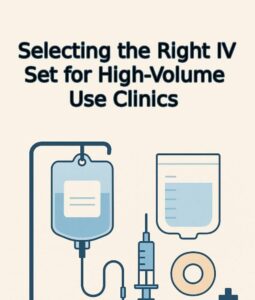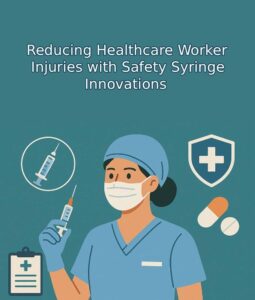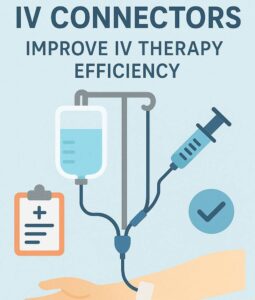When sourcing a reliable Veterinary needles supplier, veterinarians and animal care professionals frequently search for durable, safe, and accurate animal injection needle options. Understanding veterinary needle types—from their gauges and lengths to materials and coatings—is essential for administering injections effectively and avoiding complications. This article dives deep into needle varieties, their ideal use cases, and the export hurdles you must overcome to deliver top-quality needles worldwide. Know more..
Why Choosing the Right Needle Matters
Veterinary injections aren’t one-size-fits-all. When handling livestock, pets, or exotic animals, selecting the correct veterinary needle type significantly affects:
- Precision and control: The right gauge reduces dosage errors and minimizes tissue trauma.
- Animal comfort: Proper length and sharpness improve ease of use and reduce stress.
- Safety: Choosing quality products from a trusted vet needle supplier ensures sterility and structural integrity.
- Efficiency: Optimized needles speed up routine procedures and lower infection risk.
- Brand reputation: High-quality animal injection needle stock enhances care providers’ trust in your products.
Most Common Veterinary Needle Types
Below is a comprehensive breakdown of veterinary needle types, organized by key characteristics:
1. Gauge (Diameter)
- 18–20G (Thick): Used for viscous products like vaccines in large livestock—cows, horses, and pigs.
- 21–22G (Mid-range): Versatile sizes for most dogs, cats, and small-scale farm animals.
- 23–25G (Fine): Ideal for small pets, birds, exotics, and subcutaneous administration.
2. Length
- 1″–1.5″ Needles: Used for intramuscular injections in mid-sized animals.
- 5/8″–1″: Useful for typical dogs and cats.
- ½″ and Shorter: Ideal for birds, rodents, and intradermal injections.
3. Tip Types
- Bevel-Tip:
- Regular bevel (short or long): Quick penetration, easier for thick skin.
- Extra-fine or ultra-fine bevel: Minimizes trauma—great for subcutaneous injections and sensitive-skinned animals.
- Blunt Fill Needles: These aren’t used for injection but for drawing up fluid from vials—safer during preparation.
4. Coating & Materials
- Silicone-coated stainless steel: Reduces injection force and increases comfort.
- Needle filters: Designed to block debris from large-volume reconstituted vaccines.
5. Specialty Needles
- Insulin needles: Ultra-fine; typically 28–31G, optimized for precise dosages in diabetic pets.
- Spinal needles: Used for cerebrospinal fluid collection—usually longer, thicker, and with a stylet.
- Trocar or catheter-tipped: Used when needles double as guidewires for catheter placement.
Matching Needles to Veterinary Scenarios
| Scenario | Gauge | Length | Tip Type | Notes |
| Cattle intramuscular vaccine | 18–20G | 1″–1.5″ | Regular bevel | Use needle filters for vial prep |
| Dog—subcutaneous fluid therapy | 22–23G | 1″ | Short bevel | Silvertone/silicone coatings preferred |
| Cat—insulin injection | 30–31G | ½″–⅜″ | Ultra-fine bevel | Prefilled pens may eliminate needle |
| Bird—vaccination | 25–27G | ½″ or less | Extra-fine bevel | Increases comfort; watch gauge length |
| Equine joint anesthesia | 18–20G | Longer | Regular or spinal tip | Use aseptic needle filters |
Tips from a Leading Vet Needle Supplier
Veterinarian clinics and animal hospitals rely on vet needle suppliers to deliver consistent quality and guidance. Here are best practices:
- Match gauge to viscosity: Thick injectable fluids like certain antibiotics or oxytocin require 18–20G, while simple vaccines suit 22–23G.
- Monitor expiration dates: Rubber seals degrade—prioritize shelf life and proper storage.
- Avoid needle reuse: Always use single-use, sterile needles to prevent disease transmission or contamination.
- Train on bevel direction: Always bevel up when injecting—this minimizes tissue damage and pain.
- Mind packaging sizes and logistics: Clinics often prefer bulk packaging to minimize costs; your animal injection needle line should accommodate this.
Export Challenges: Maintaining Quality Across Borders
As global demand grows, export-ready veterinary needle types face multiple obstacles:
Regulatory Approvals
- FDA (US), CE (EU), ANVISA (Brazil), etc.—each region demands unique registration and compliance.
- Exporters must prepare detailed technical documents: flow of materials, ISO certifications, sterilization validation, packaging integrity test results.
Sterility Assurance
Gamma irradiation and ethylene oxide (EtO) sterilization are common. However:
- Shelf life testing must show sterility over typical shipping and storage times.
- Packaging integrity must meet drop, compression, and vibration standards.
Logistics and Costs
- Temperature control isn’t critically important, but clean, dry storage is.
Shipping must comply with medical device classification regulations, including required documentation (e.g., CE Declaration of Conformity, FDA 510(k) if needed, etc.).
- Customs duties and tariffs can vary by country—list Harmonized System (HS) codes and certified invoices to avoid delays.
Labeling and Language Requirements
- Product labels must be in the destination country’s language(s) (e.g. Spanish for Latin America, Chinese for China).
- Include instructions for use, sterilization indicators, expiration date, batch/lot number, manufacturer address, and importer details.
Counterfeit Protection
- The medical device market is vulnerable to counterfeit needles. Exporters can use:
- Holograms
- Tamper-evident seals
- Track-and-trace mechanisms (e.g. QR codes linking to product authenticity)
Customs and Documentation
- Required documents often include:
- Commercial invoice
- Packing list
- Certificate of origin
- Sterilization certificates
- Quality certificates (ISO 13485)
- Technical file (design, validation, risk analysis)
- Export insurers usually require proof-of-delivery documents and temperature logs as part of their policies.
Choose a Vet Needle Supplier Who Understands Global Needs
When clinics search for a vet needle supplier, they want more than needles—they want:
- Reliable supply chains: Accurate lead times and volume guarantees.
- Regulatory support: Help with dual registration in multiple markets.
- Training materials: Videos, instructions, webinars to help staff comply with best practices.
- Tailored packaging: Clinic-ready kits and bulk surtures.
By emphasizing compliance, education, and support, you become a partner—not just a vendor.
Innovations on the Horizon
With continued R&D, animal injection needle tech is evolving:
Safety-Engineered Devices (SEDs)
- Retractable needles and shielded systems reduce accidental needle-stick injuries for vets and staff.
- Increasingly required in countries with strict occupational health regulations.
Coated and Lubricated Needles
- Polymers or silicone coatings now standard—reducing penetration force and tissue trauma.
Smart Needles
- Early-stage R&D: needles equipped with sensors to detect pressure, depth, or tissue resistance. Especially promising in equine or livestock anesthesia.
Biodegradable Needles?
- Used in wildlife tagging, these dissolve over time, eliminating the need to recapture tagged animals.
Marketing Tips for Your Veterinary Needle Business
To assert your brand as a top-tier vet needle supplier, focus your marketing strategy:
- Create educational content: Use blog posts, video tutorials, and infographics explaining veterinary needle types, injection techniques, and compliance.
- Host webinars: Invite field veterinarians to share best practices, building credibility.
- Showcase certifications: Highlight ISO, FDA, CE approval badges prominently.
- Deploy sample campaigns: Provide starter kits to potential bulk buyers.
- Highlight export readiness: Promote your ability to deliver fully compliant, sterilized needles across continents.
- Offer multilingual materials: Local-language instructions reduce purchase barriers in export markets.
Conclusion
Understanding veterinary needle types empowers vets to provide safe, effective animal care. When partnered with a trustworthy vet needle supplier who streams high-quality animal injection needle products, you’ll build credibility in both domestic and global markets. Navigating export challenges—from regulations and sterility to packaging and documentation—becomes a competitive advantage that sets you apart.
Provide vets with smart, effective needle solutions—and you’ll earn their loyalty one trusted injection at a time.






